Country Area 414.81 km2 | Mayor Pawel Adamowicz | |
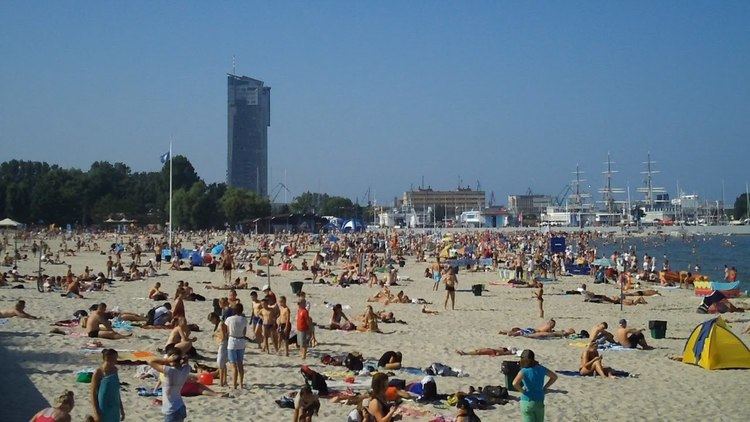 | ||
Map of Tricity, Poland
Tricity, or Tri-City (Polish: Trójmiasto [[trujˈmʲastɔ]], Kashubian: Trzëgard, German: Dreistadt) is a metropolitan area in Poland consisting of three cities in Pomerania: Gdańsk, Gdynia and Sopot, as well as minor towns in their vicinity. They are situated adjacent to one other, in a row on the coast of Gdańsk Bay, Baltic Sea, in Pomerelia (Pomeranian Voivodeship), northern Poland. The Tricity metropolitan area has a population of over 1 million people.
Contents
- Map of Tricity Poland
- Economy
- Population
- Education
- Entertainment
- Climate
- Sport
- Transport
- Airport
- Ferries
- Buses
- Foreign representatives
- References
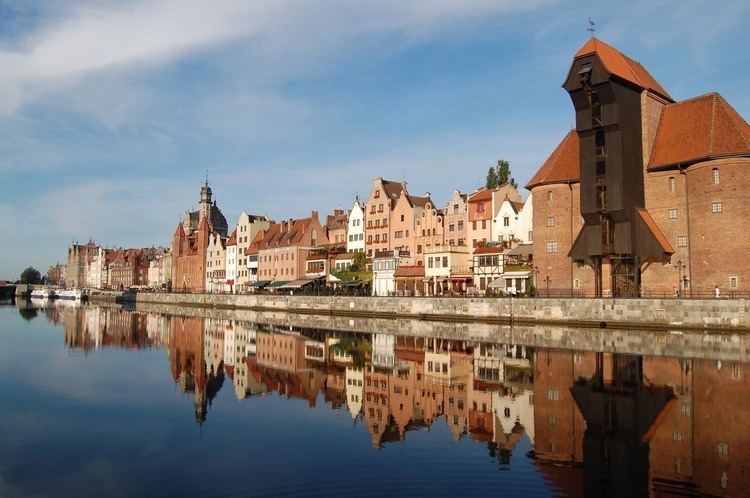
The name Trójmiasto was used informally or semi-formally only, until 28 March 2007, when the "Tricity Charter" (in Polish Karta Trójmiasta) was signed as a declaration of the cities' cooperation.
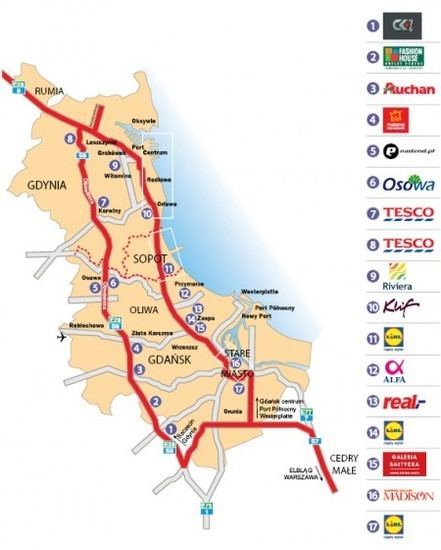
Economy
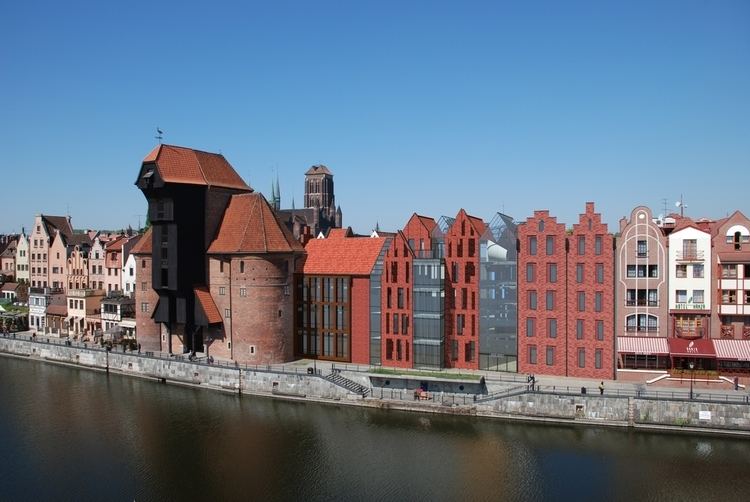
Nearly 35% taxpayers from Tricity are in the middle and high taxable income groups (average for Poland 10%). Approximately 12% of Tricity taxpayers are in highest taxable income group (Polish average 3%).
Population
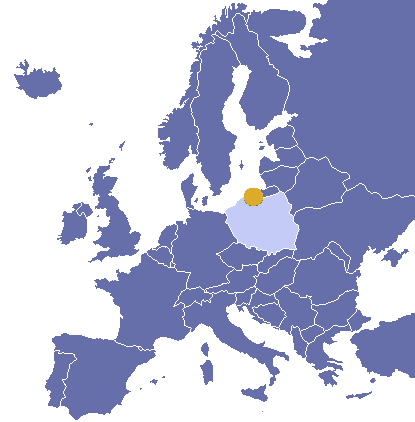
The total population of the 3 cities comprising Tricity (Gdańsk + Gdynia + Sopot):
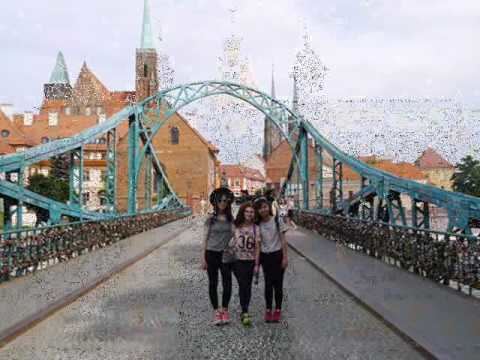
The Tricity metropolitan area also includes Wejherowo, Reda, Rumia, Pruszcz Gdański and several other communities. The total population in 2006 was 1,100,500, in an area of 1580.69 km².
The Tricity continuous urban area includes following cities:
According to official EU publication the population of Larger Urban Zone of Tricity is 1 098 379.
Education
The Tricity is an important center of education.
Some of universities:
Entertainment
Cinemas:
Theatres:
Opera house and Philharmonic
Climate
Tricity has a temperate climate with warm summers and cold winters that can be very severe. Rain is possible all year round. Summer is the best time to visit when temperatures range from 70°F to 90°F (20°C to 30°C), but evenings can be cool enough to require a sweater. Winters are wet, cold and grey.
Sport
Tricity has a number of professional teams, which compete in basketball, volleyball, speedway, handball, rugby union and football.
The most known football clubs are Lechia Gdańsk and Arka Gdynia, both of which also possess highly successful rugby teams (RC Arka and RC Lechia. There is a third top-flight Polish rugby team Ogniwo Sopot, making the Tricity Poland's rugby capital. The third football club is Bałtyk Gdynia.
Wybrzeże Gdańsk are the Tricity's speedway team, formerly a multi-sports club, now its only other remaining section is the reactivated handball team, former 10 times men's Polish champions.
Asseco Gdynia and Trefl Sopot are the two men's professional basketball teams, while Lotos Gdynia are their female counterparts.
Transport
The Tricity has a well-developed public transport system.In addition, each city has its own. Here is described only the public part of the system.
Development of the Tricity was smoothed by the construction of the city train (SKM) 1951, binding the whole area from Tczew by Gdańsk, Sopot 1953, Gdynia 1956, Reda, Rumia to Wejherowo 1957.
The backbone of the Tricity is the inner highway. It starts in Gdańsk and goes through Sopot, Gdynia, Rumia and Reda to Wejherowo. It consists of 2-4 lanes in each direction.
In 1975 the dual carriageway Tricity Beltway (Obwodnica Trójmiejska) was constructed. It starts in the vicinity of Pruszcz Gdański and goes through the western districts of Gdańsk to Gdynia-Chylonia.
There is a plan to build a new line of Szybka Kolej Miejska to connect the Baltic Arena with Gdańsk Lech Wałęsa Airport.
Airport
Gdańsk Lech Wałęsa Airport is one of the three main international Polish airports. Its position is associated with a well-developed network of domestic and international transport connections provided in response to the growing demand for business and tourist travel.
The Gdańsk Airport is located a mere 10 km from the centre of Gdańsk, about the same distance from the centre of Sopot and 23 km from the centre of Gdynia. The continually expanding road system which connects the airport with the city centres allows drivers to cover the distances in about 15–20 minutes. The close vicinity of the Tri-city by-pass and junctions with state motorways nos. 1, 6 and 7 facilitates access from areas outside the Tri-city. The convenient location of the airport makes it easy for travellers and cargo carriers to transfer from air to road, and also to the railway network and seaports. Gdańsk Lech Walesa Airport has its own railway siding which can be used for handling large lots of cargo dispatched by air.
The efficient Gdańsk Airport operates even the biggest planes and allows thousands of tourists to visit the Pomerania province every day. Just in front of the main entrance to the passenger terminal the visitors can find a bus that will take them to the city centre. They may also chose to take a taxi that will take them wherever they want to go in the area of the Tri-City for a relatively small price.
There's also a plan of building a terminal in Gdynia. It's going to be completed in 2012 for UEFA Euro 2012.
Getting airport by bus
Airplanes connections with GDN:
Ferries
Ferryboats connections with Gdynia, Sopot, Gdańsk:
Buses
The variety and a number of connections make the travel around the Tri-City and surrounding areas very easy. One of the most popular means of transport in the Pomerania province is the public bus. There is a great number of bus lines and they cover every district of the three cities of the metropolis. In Gdynia, except normal buses, there are also Trolleybuses.
Foreign representatives
Gdańsk:
Gdynia:
Sopot:
